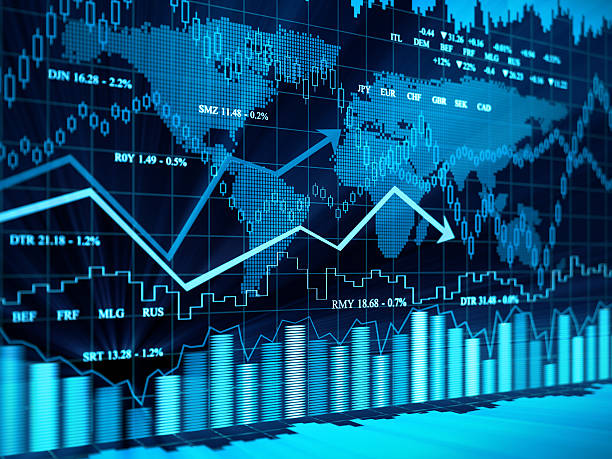The Intricacies of Algorithmic Trading in Modern Markets
Algorithmic trading, a cornerstone of modern financial markets, has revolutionized the way stocks, commodities, and currencies are traded. This sophisticated approach to trading leverages complex mathematical models and high-speed computer programs to execute large volumes of trades at speeds impossible for human traders. But what does this mean for individual investors, market stability, and the future of finance?

The Evolution of Algorithmic Trading
Algorithmic trading, often referred to as algo-trading, has its roots in the 1970s when computerized trading systems were first introduced to financial markets. However, it wasn’t until the 1980s and 1990s that algorithmic trading began to gain significant traction. The advent of electronic communication networks (ECNs) and improvements in computing power paved the way for more sophisticated trading algorithms.
In the early 2000s, algorithmic trading experienced explosive growth. Financial institutions invested heavily in developing advanced algorithms and high-frequency trading systems. This period saw the rise of quantitative trading firms, often referred to as quant funds, which relied heavily on mathematical models and computer-driven strategies to make trading decisions.
As technology continued to advance, so did the complexity and speed of algorithmic trading systems. Today, these systems can analyze vast amounts of market data, identify trading opportunities, and execute trades in microseconds, far outpacing human traders in both speed and efficiency.
How Algorithmic Trading Works
At its core, algorithmic trading involves using computer programs to follow a defined set of instructions for placing trades. These instructions are based on timing, price, quantity, or any mathematical model. The algorithms are designed to monitor market conditions and execute trades when specific criteria are met.
There are several types of algorithmic trading strategies, including:
- Trend-following strategies: These algorithms identify and capitalize on market trends.
- Arbitrage opportunities: Algorithms seek price differences between related securities across different markets.
- Mean reversion: Based on the assumption that prices and other market indicators tend to revert to their historical average.
- Volume-weighted average price (VWAP): Aims to execute large orders with minimal market impact by breaking them into smaller trades.
- Time-weighted average price (TWAP): Similar to VWAP but focuses on executing trades evenly over a specified time period.
These strategies often incorporate machine learning and artificial intelligence to improve their performance over time, adapting to changing market conditions and new data inputs.
The Impact on Market Dynamics
Algorithmic trading has significantly altered market dynamics, bringing both benefits and potential risks. On the positive side, it has increased market liquidity, reduced transaction costs, and improved price discovery. The high volume of trades executed by algorithms helps to keep bid-ask spreads tight, benefiting all market participants.
However, the speed and complexity of algorithmic trading have also raised concerns about market stability. Critics argue that algorithmic trading can exacerbate market volatility, particularly during periods of stress. The 2010 Flash Crash, where the Dow Jones Industrial Average plunged nearly 1,000 points in minutes before quickly recovering, is often cited as an example of the potential dangers of algorithmic trading.
Moreover, the rise of high-frequency trading (HFT), a subset of algorithmic trading characterized by extremely fast trade execution, has sparked debates about fairness in the markets. Some argue that HFT firms have an unfair advantage over other market participants, while proponents contend that they provide necessary liquidity and efficiency to the markets.
Regulatory Challenges and Responses
The rapid growth of algorithmic trading has presented significant challenges for regulators. Traditional regulatory frameworks were not designed to address the complexities and speed of modern algorithmic trading systems. In response, regulators worldwide have implemented new rules and oversight mechanisms.
In the United States, the Securities and Exchange Commission (SEC) has introduced measures such as the Market Access Rule, which requires brokers to implement risk controls to prevent erroneous orders. The Commodity Futures Trading Commission (CFTC) has also implemented regulations specifically targeting algorithmic trading in futures markets.
In Europe, the Markets in Financial Instruments Directive II (MiFID II) includes provisions for algorithmic trading, requiring firms to have effective systems and risk controls in place. These regulatory efforts aim to ensure market stability and fairness while allowing for technological innovation.
The Future of Algorithmic Trading
As technology continues to advance, the future of algorithmic trading looks set to be shaped by several key trends:
- Artificial Intelligence and Machine Learning: These technologies are expected to play an increasingly important role in developing more sophisticated and adaptive trading algorithms.
- Big Data Analytics: The ability to process and analyze vast amounts of data will become even more crucial in gaining a competitive edge.
- Cloud Computing: Cloud-based solutions are likely to become more prevalent, offering increased computational power and flexibility.
- Blockchain Technology: While still in its early stages, blockchain could potentially revolutionize trade execution and settlement processes.
- Quantum Computing: Although still theoretical for most applications, quantum computing could dramatically enhance the speed and complexity of algorithmic trading systems in the future.
Key Considerations for Investors
- Understand the role of algorithmic trading in modern markets
- Be aware of potential market volatility caused by algorithmic trading
- Consider the impact of high-frequency trading on short-term price movements
- Stay informed about regulatory developments in algorithmic trading
- Evaluate the use of algorithmic trading strategies in personal investment portfolios
- Recognize the importance of risk management in an algorithm-driven market
In conclusion, algorithmic trading has become an integral part of modern financial markets, bringing increased efficiency and liquidity but also new challenges and risks. As technology continues to evolve, it will be crucial for investors, regulators, and market participants to stay informed and adapt to the changing landscape. While algorithmic trading may seem daunting to individual investors, understanding its role and impact can help in making more informed investment decisions in today’s complex financial world.





